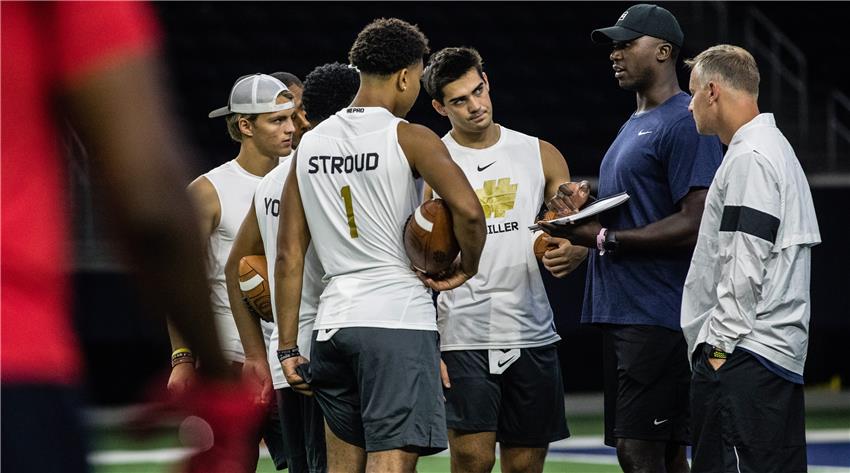
How NFL Draft Buzz Predicts 40-Yard Dash Times for College Players
At NFL Draft Buzz, we strive to provide the most accurate and insightful predictions for NFL prospects. One of the key performance metrics at the NFL Combine is the 40-yard dash, which is often viewed as a critical indicator of speed and explosiveness.
Our approach to predicting 40-yard dash times leverages historical data, player development trends, and advanced analytics to provide a reliable forecast of how college players will perform at the NFL Combine.
Understanding the Data
To predict an athlete's 40-yard dash time, we begin by collecting extensive data from multiple sources. This includes:
- High school combine performances
- Verified track and field results
- College game film
- Reported training regimens
- GPS-tracked speed data
The foundation of our model is built upon identifying trends in speed development from high school through college and into the professional ranks. An important note: We only estimate 40-yard dash times and other performance metrics when we do not have a recent verified time. If a player has a confirmed, up-to-date time from a reputable source, we use that instead of making a projection. Our predictive model serves primarily to fill knowledge gaps where recent verified data doesn't exist.
High School Data as a Baseline
Many college athletes participate in high school combines, such as:
- National Underclassmen Combine (NUC)
- The Opening Regional Combines
- Rivals Camp Series
- Under Armour All-America Camp Series
- 247Sports Camp Series
- Elite 11 Quarterback Competition
These events provide us with early data on a player's speed, which serves as a baseline for projecting future improvements. On average, a high school wide receiver runs the 40-yard dash in the mid 4.7s, while at the NFL Combine, the average time for the same position improves to the low 4.5s. Similar performance enhancements can be observed in drills like the shuttle and the vertical jump.
Extrapolating College Development
Once we establish a high school baseline, we analyze how players at each position typically progress. Our model considers several key factors:
- Physical Maturation: Most players add muscle mass while refining their running mechanics, leading to improved acceleration.
- Training and Coaching: Advanced training techniques, improved diet, and professional coaching contribute to speed gains.
- Game Speed Correlation: We study actual in-game performances to assess whether improvements in functional speed translate to better 40-yard dash times.
- GPS Data: We track top in-game speeds using GPS data to measure real-time acceleration and peak velocity.
- Game Film Analysis: We estimate speed based on stride length, acceleration phases, and running biomechanics.
By comparing past player data, we can estimate the expected improvement for each athlete. For example, Clemson's Wide Receiver Beaux Collins, who recorded a 35.1-inch vertical and a 4.30 shuttle at the Opening Regional in 2019, ranked in the 66th and 44th percentiles, respectively. When cross-referenced with historical NFL Combine percentiles, we project potential performances of 36.5 in the vertical and 4.27 in the shuttle.
Machine Learning & Predictive Analytics
Our methodology incorporates machine learning algorithms that analyze thousands of data points, including:
- Player position, height, and weight
- High school and college speed metrics
- Strength and conditioning reports
- Training camp and pro day results
- GPS-tracked velocity and acceleration data
By integrating biomechanical modeling, we can estimate the efficiency of a player's running mechanics and their ability to sustain top-end speed over short distances.
NFL Draft Predictions
For the 2025/6 draft class, we have applied this predictive model to over 350 top prospects. While our initial focus was on shuttle and vertical jump projections, we now include 40-yard dash forecasts for all eligible players with reliable historical data. It's worth emphasizing that we prioritize accuracy above all else — if a player has an up-to-date verified time, we always use that actual data rather than our estimate. Our predictions are only used when recent verified measurements aren't available.
Limitations of Our Predictions
While our projections provide a strong indication of expected performance, they are not absolute guarantees. Several factors can impact an athlete's actual results:
- Variability in Performance: Some players drastically outperform or underperform their estimates due to factors such as last-minute injuries, nerves, or differences in training regimens.
- Combine or Pro Day Conditions: Weather, track surfaces, and timing accuracy can create discrepancies between predicted and actual results.
- Athlete's Physical Condition on the Day: A player may simply have a bad day at the NFL Combine or their Pro Day, leading to times that do not reflect their true potential.
While we pride ourselves on the accuracy of our predictions, we acknowledge that our estimates are not infallible. Some players dramatically outperform or underperform projections, and luck can play a role in performance on any given day.
Final Thoughts
By leveraging high school and college data, historical trends, GPS-tracked speed, and cutting-edge analytics, NFL Draft Buzz is able to provide highly accurate 40-yard dash projections for NFL prospects. As the Combine approaches, we will continue refining our model to ensure our readers and NFL teams receive the most accurate and insightful predictions available. Stay tuned for our latest updates and in-depth analysis of the draft class.
